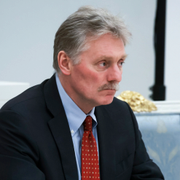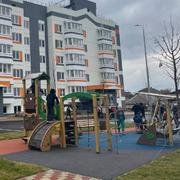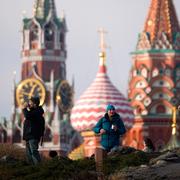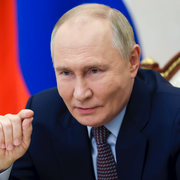bakgrund
Rysslands mobilisering
Wikipedia (en)
On 21 September 2022, Russian President Vladimir Putin announced a "partial mobilization" of military reservists in Russia after facing setbacks in the Russian invasion of Ukraine, and signed the corresponding decree No. 647 "On the Declaration of Partial Mobilisation in the Russian Federation". The decision was made shortly after the successful Ukrainian counteroffensive in Kharkiv Oblast and a day after the announcement of referendums on the accession of the DPR, LPR, Kherson and Zaporizhzhia oblasts.In his speech, Putin stated the "partial mobilization" was suggested to him by the Ministry of Defense and General Staff of the Armed Forces. Defense Minister Sergei Shoigu announced that Russia has a "huge mobilization reserve" and plans to mobilize 300,000 in reserve. It is impossible to accurately verify the data on mobilization plans, since paragraph 7 of the decree—which, according to press secretary Dmitry Peskov, relates to the number of people mobilized—is classified as "for official use only". Mobilization activities technically began immediately.With the announcement of mobilization, Putin escalated Russia's military efforts in the war with Ukraine. Despite the mass retreat of Russian troops from central and eastern Kharkiv Oblast, Putin maintained in his address that Russia's goals in Ukraine had not changed. Putin's speech was pre-recorded (as was the one broadcast hours prior to the invasion) and aired at 10:00 Moscow Time (UTC+3), so that all regions of Russia were notified simultaneously. The speech followed the State Duma's amendments to the Criminal Code regarding, among others, a penalty of up to 10 years in prison for "military desertion". Putin accused the United States and European Union of "nuclear blackmail" against the Russian Federation and recalled the presence of their own weapons, adding "this is not a bluff". Putin reaffirmed his support for hastily announced referendums paving the way for the occupied Ukrainian territories to be declared part of Russia, using the call for referendums to justify the need for mobilization.Putin has previously avoided declaring mobilization, but the Russian retreat in Kharkiv Oblast and calls from pro-war nationalists appear to have swayed Putin into doing so. Previously, mobilizations in the Russian Empire were conducted during the Russo-Japanese War in 1904, and at the beginning of World War I in 1914. The Soviet Union mobilized its population and industry following the 1941 Nazi German invasion during World War II.After the introduction of mobilization, there were reports that the Kremlin was discussing the possibility of introducing martial law, though Peskov denied this. As of 8 October 2022, 36 Russian regions have announced that they had completed the partial mobilization.




